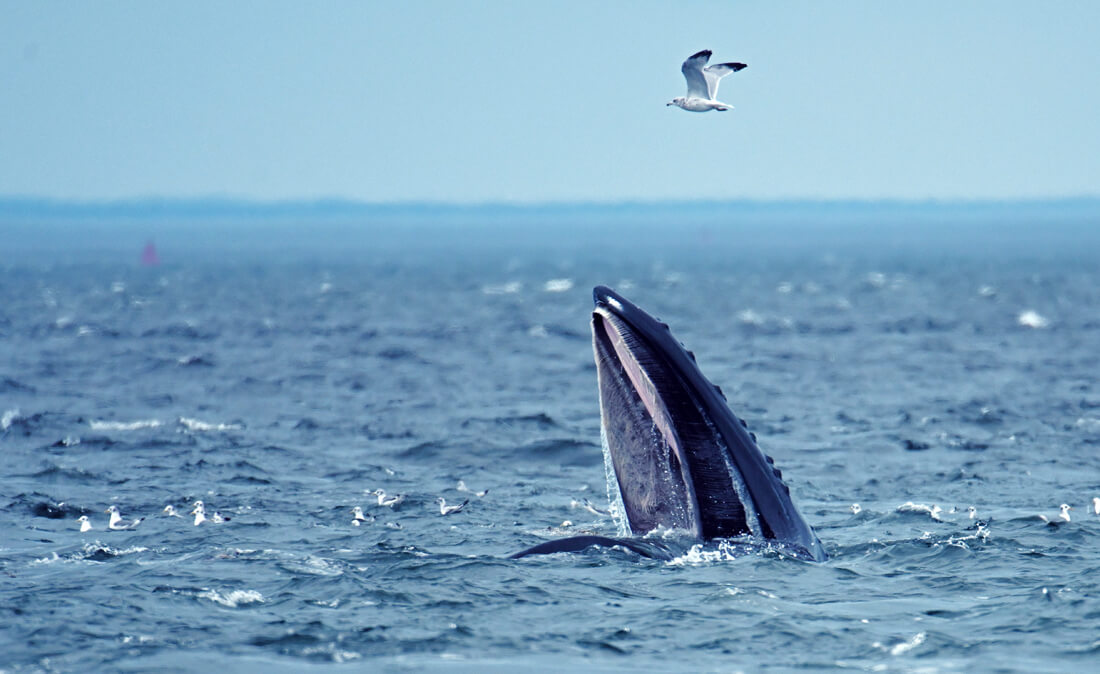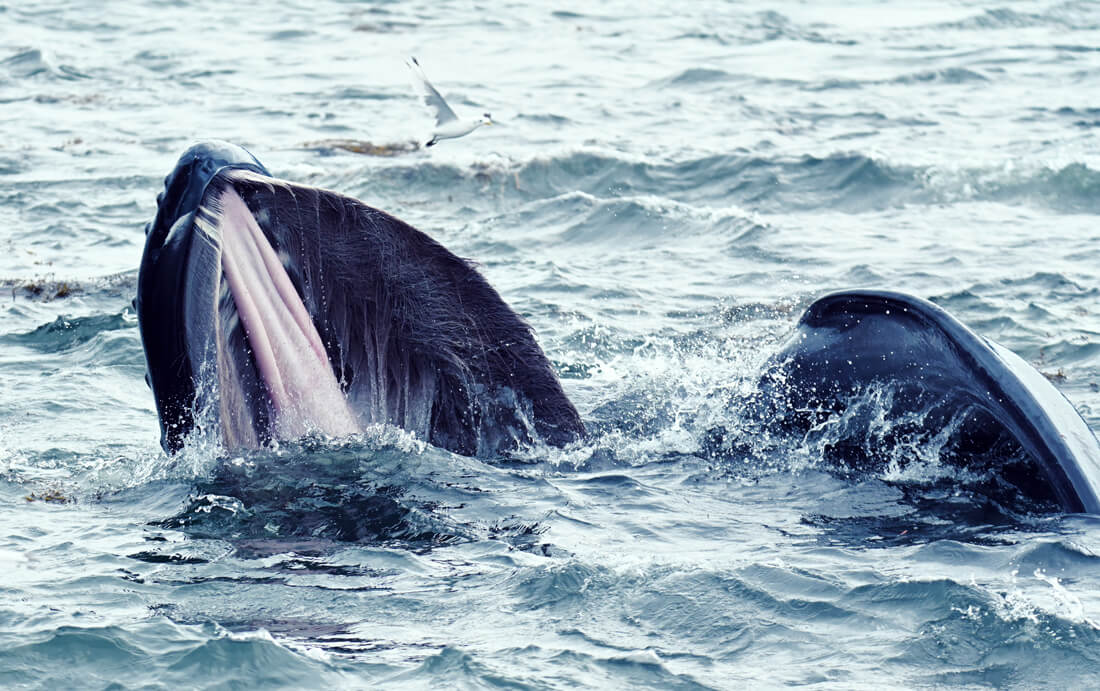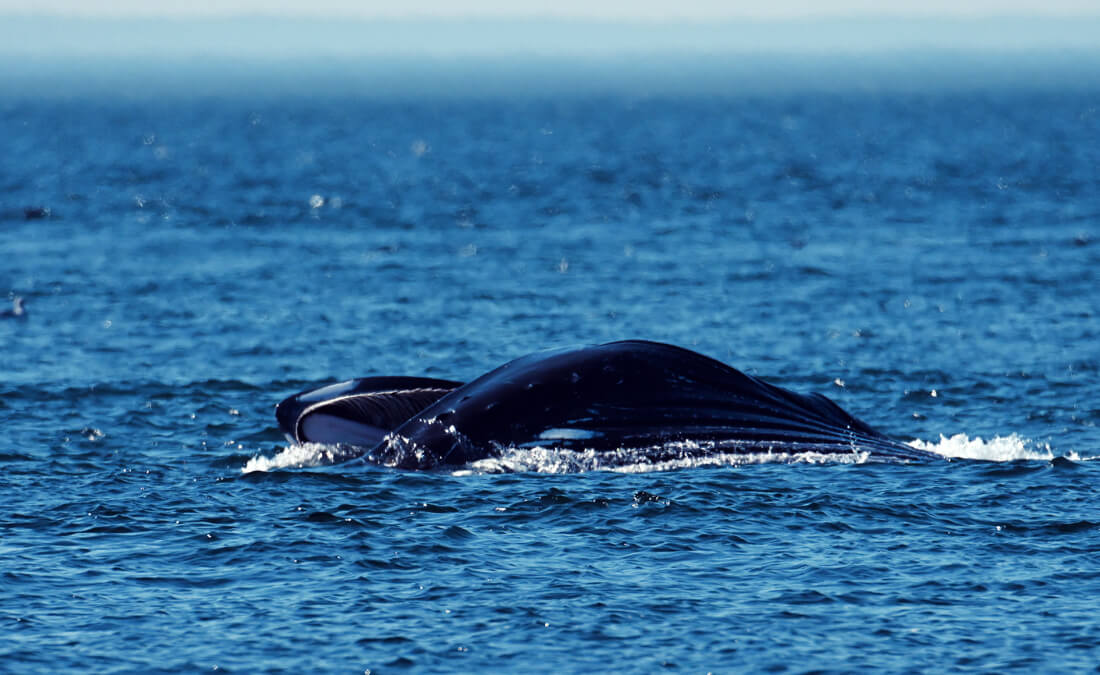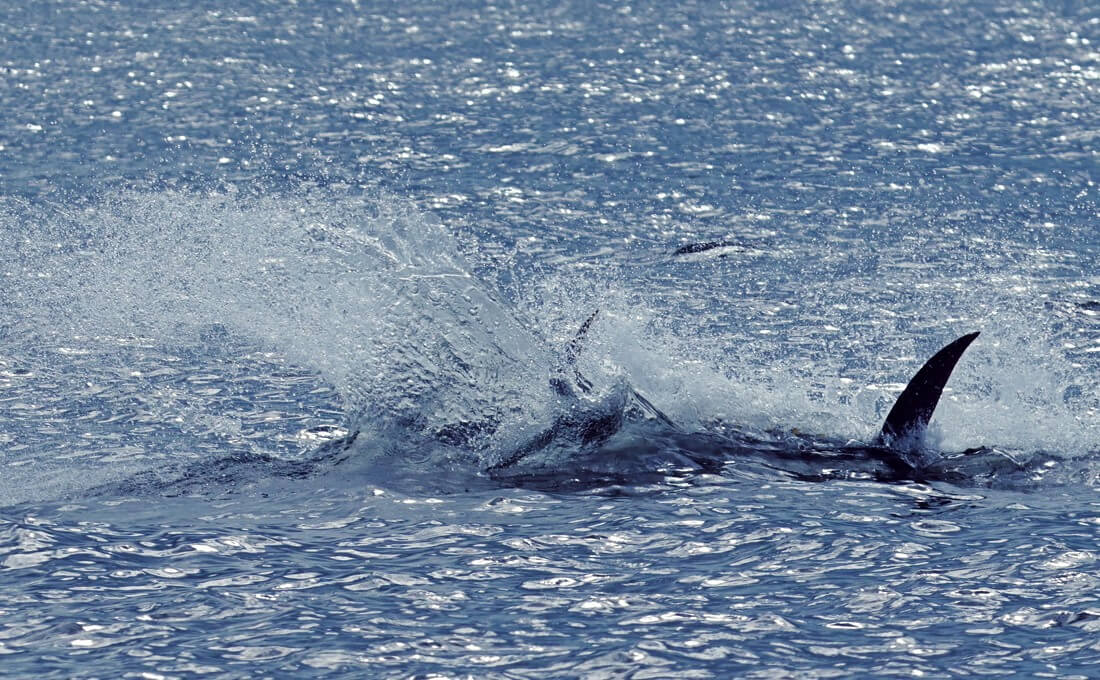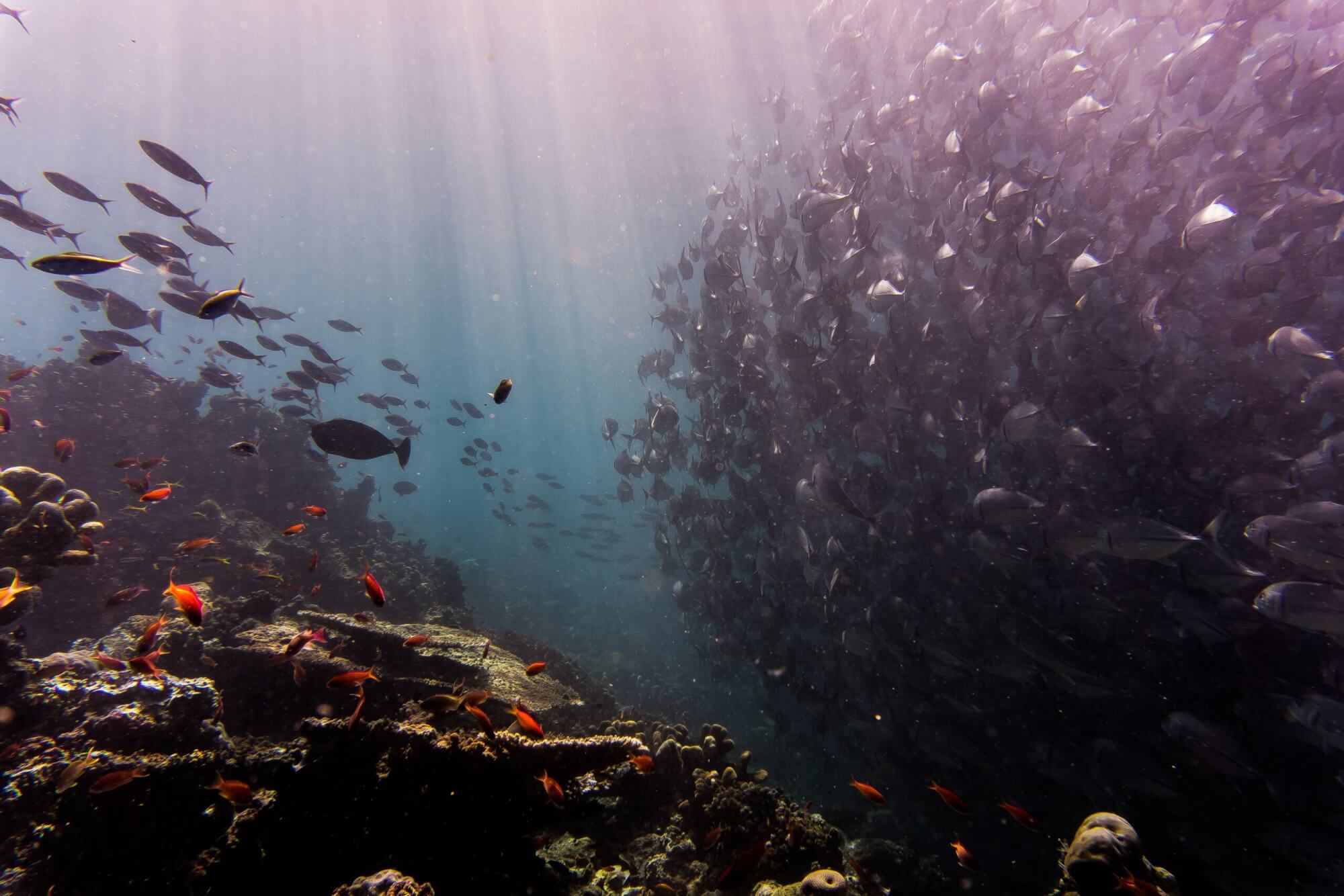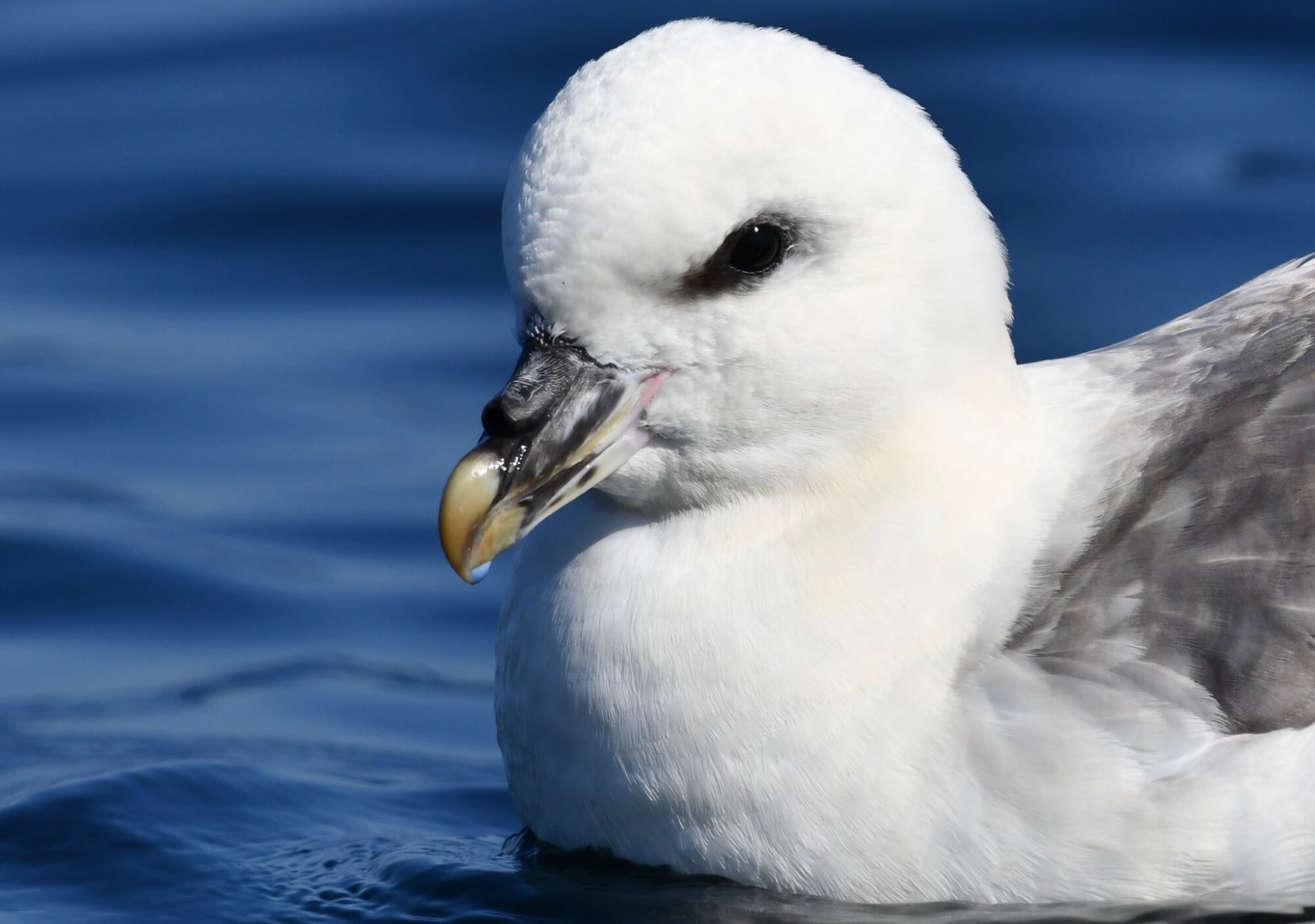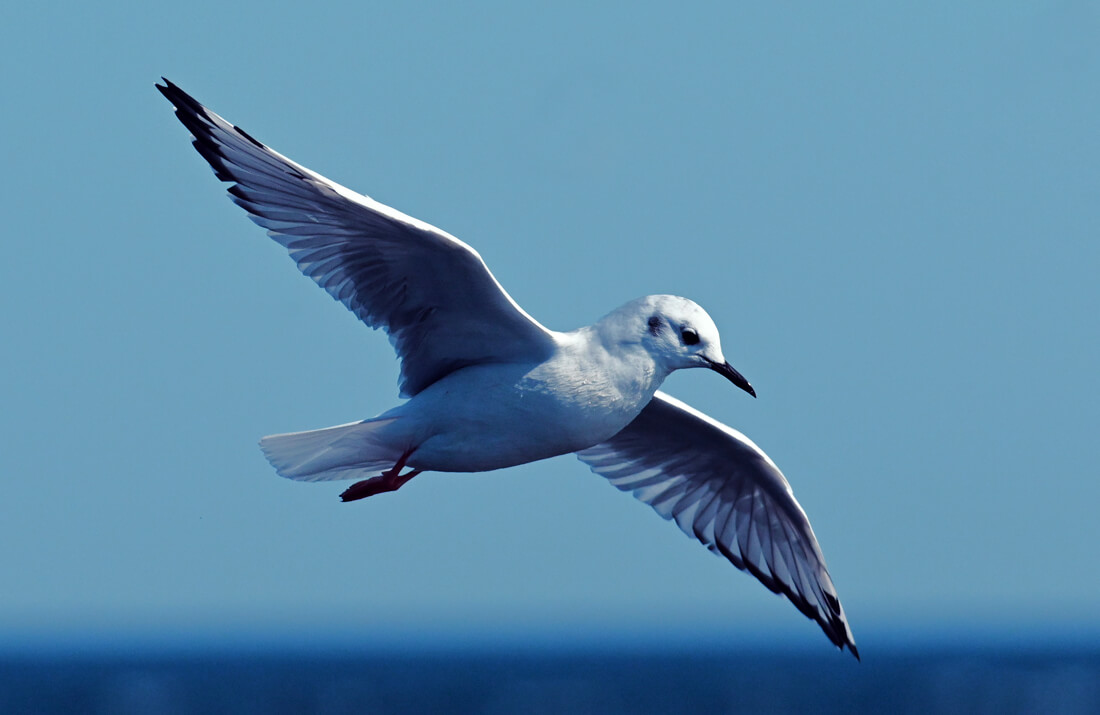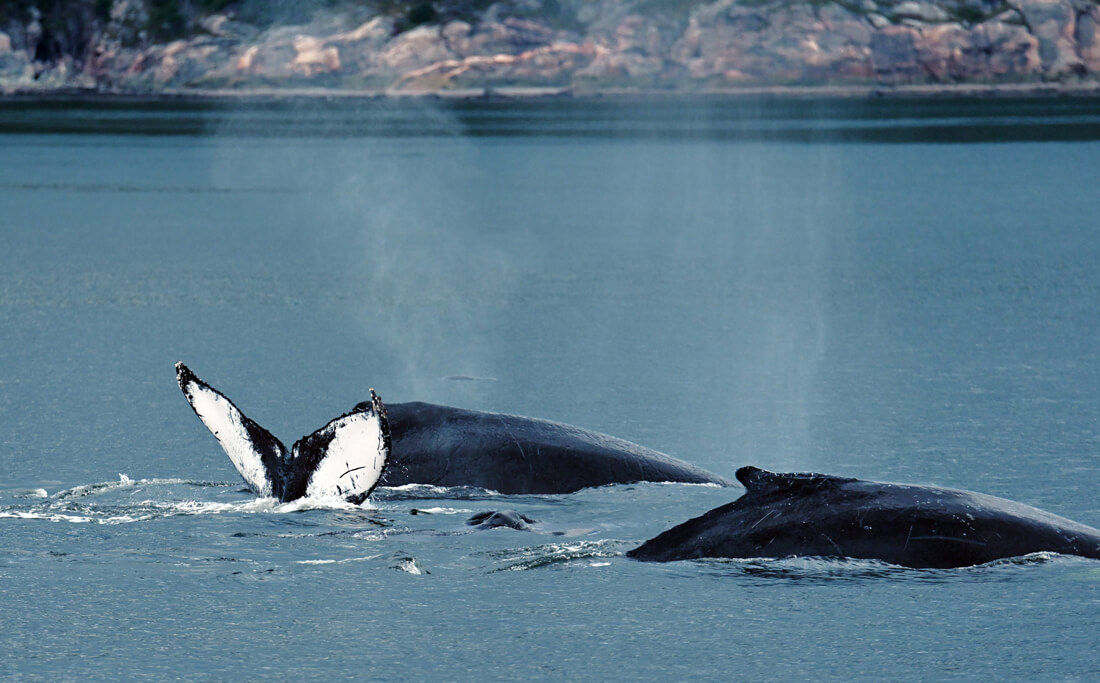Autumn is right around the corner for our queens of the seas, who are gearing up – quietly but surely! – to begin their second big annual migration. Whales are filling their bellies with huge gulps of krill, stocking up on the energy they’ll need to make their journey to winter in the Caribbean, where they’ll fast for several months! Once they’ve fattened up, they can head back south to enjoy warmer waters. This week, humpbacks are once again stealing the show, but the presence of tuna in the river and seabird migration are also noteworthy.
Between dream and reality
Saturday, September 16, 2023. A day that will remain etched in many memories, mine in particular. After a relatively calm season in terms of sightings – I haven’t been the most observant this year! – I witness an event that is rarely observed in the marine world: the presence of several humpback whales gathered and surface feeding in the same place.
Imagine watching a captivating wildlife documentary with the soothing voice of David Attenborough transporting you to the heart of the action. As our boat is gently rocked by the waves formed by the tide rips, the humpbacks are gulping down huge mouthfuls of water in hope of capturing as many krill as possible between their baleen. All around our craft, these powerful creatures offer us the spectacle of a lifetime, even sneaking under the vessel only to emerge a little farther away under completely ecstatic gazes. At times, they swim in perfect synchrony, suggesting that some form of mutual assistance exists between them. Indeed, humpbacks are known to occasionally collaborate with members of their own species to increase their hunting success. Some individuals even use their pectoral fins to guide fish toward their mouths.
The profound feeling of intimacy we feel with both the whales and with each other is testimony to the magnitude of this euphoric moment. It is essential to never forget that we are the ones intruding into their habitat and not the other way around, meaning unconditional respect is a must.
The frenzy of marine life… and climate change!
This week, marine wildlife made waves in the estuary and gulf, literally and figuratively! First, the notable presence of tuna almost everywhere in the river intrigues those who observe their deftness for the first time. Indeed, funny splashes and spirited leaps out of the water confirm the presence of bluefin tuna in the St. Lawrence. Their hydrodynamic shape is a wonderful adaptation for hunting in a marine environment, providing them with the ability to zip through the water at peak speeds of up to 100 km/h!
These large predators can reach two metres in length, weigh up to 600 kg and live up to 40 years. They are also highly migratory, travelling up to 10,000 km in a single year. All these characteristics make them fairly easy animals to observe and identify!
However, observers and experts are puzzled by the increased presence of bluefin tuna in the river environment, which has been noted over the past ten years or so by scientific experts at Fisheries and Oceans Canada (DFO). What conclusions can be drawn from this strong increase in the presence of tuna farther north?
According to Jacques Gélineau, marine mammal observer and collaborator for the Mingan Island Cetacean Study (MICS), the Gulf of St. Lawrence and its estuary are poised to increasingly become a refuge for cold- and temperate-water species that are less well adapted to higher ocean temperatures caused by climate change. According to the European organization Copernicus, the summer of 2023 will be the hottest ever measured. Temperature rises that are not only deeply affecting the continents, but also the sea… In the gulf and estuary, from the Gaspé Peninsula to the North Shore, surface waters have reached 17°C, a full three degrees higher than the seasonal norm! However, DFO scientists are unable to determine whether this increased presence of tuna is the result of changes in ocean temperature, prey availability, increases in the bluefin tuna population, or a combination of these factors.
Undeniably, a process of profound transformation is underway in the St. Lawrence, representing a direct threat not only to whales but to all marine biodiversity. This new phenomenon could have considerable impacts on the abundance and distribution of prey, forcing certain species to alter their migration patterns and find new feeding grounds. “The St. Lawrence has become a real hotbed for surprises,” remarks GREMM co-director Patrice Corbeil.
The future remains uncertain and only time will reveal the true repercussions of our unrestrained use of fossil fuels (the biggest contributors to the global climate crisis) on marine biodiversity.
Splish, Splash!
On a more exciting note, around ten humpbacks offered an extremely rare spectacle to the few fortunate individuals who happened to be in the right place at the right time on Thursday, September 14! Spectators oohed and aahed at breaches not by the dozens, but by the hundreds. H919, a.k.a. Titlo, reportedly breached around fifty times, while Yvon and Éline were said to have performed similar acrobatics dozens of times! Even a younger whale – possibly Tingley’s sixth calf – showed off its agility by performing around thirty breaches. Was this its first aerial performance? Maybe not, but observers were undoubtedly deeply moved regardless. Naturalist and wildlife photographer Renaud Pintiaux describes the palpable excitement that reigned offshore: “It was completely out of the ordinary and unreal. Tears, smiles, disbelief, pure joy.” During one breach, the whale emerges at a speed of 15 knots and an angle of 30° with nearly 90% of its body out of the water before performing an aerial half-twist and splashing down on its back!
A number of hypotheses have been put forward by experts to explain this relatively infrequent behaviour: diet, enhanced diving capacity, play, communication, etc. These breaches actually seem to be more frequent when the nearest group is more than four kilometres away, especially during periods of inclement weather conditions when wind and waves tend to mask the cetaceans’ vocalizations.
Time for seabirds
This week, a multitude of seabirds were seen off the coast, dive-bombing into the water or grazing the surface in search of succulent prey, just like whales. Observations include northern fulmar; several species of jaeger; arctic tern; sooty, Manx and great shearwaters; Sabine’s, Franklin’s and little gulls; as well as Atlantic puffin! The northern fulmar has an astonishing anatomical peculiarity: it has a salt gland that allows it to drink seawater without dehydrating. The salt is expelled through its nasal passages, which have a very unique morphology!
Whales up and down the river
In the Sept-Îles sector, MICS collaborator Jacques Gélineau shares his many observations with us. A total of ten right whales were reportedly seen on Monday during an outing on the water with the MICS crew. The whales were in groups of two or three, with the largest gathering numbering five individuals. They seemed to be mating. On the way back, a fin whale and a humpback made appearances, not to mention three more fin whales opposite the Saint-Jean River. En route to Anticosti Island, the team also observed a total of five or six minke whales. This species usually stays closer to the coast to feed on capelin, but this year, they seem to be more present farther offshore. Could it be because capelin have become rather scarce this year?
Our keen-eyed observer based in Franquelin reports the presence of minke whales and two humpbacks. The spouts were clearly visible and on Sunday evening, they were even treated to a breach! Seals and porpoises were also present, as expected.
In Tadoussac, a seasoned observer and GREMM employee shares her observations with us: “On Sunday evening, several belugas were swimming at Pointe de l’Islet under the reflections of the setting sun, only to be joined shortly thereafter by two minke whales. It was awesome!” During a pelagic trip organized as part of the Migratory Bird Festival, one avid birder (and whale-watcher!) observed good numbers of porpoises, a possible fin whale and several grey seals.
In Les Escoumins, a marine biodiversity enthusiast tells us about her adventures: “While we were out on the water near Les Escoumins, four humpbacks were present between the marina and Les Îlets. The appearance of Éline in Baie des Anémones coincided with the last departure of the day. She swam east, turned around and stayed with us all the way back to the docks. I was able to see her again after returning to land as she took another dive and headed east again. So I decided to go and watch from the ferry platform, and before I knew it she emerged right in front of me, the rays of the setting sun highlighting all the white in the underside of her tail.”
Where are the whales this week? Observation map
hese data were reported by our network of observers. They give an idea of the presence of whales and in no way represent the actual distribution of whales in the St. Lawrence. Use it for fun!
Click on the whale or seal icons to discover the species, the number of individuals, additional information or photos of the sighting. To enlarge the map, click on the icon in the top right-hand corner. The map works well on Chrome and Firefox, but not so well on Safari.
To display the list of sightings, click on the icon in the top left-hand corner.


